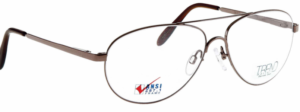Safety glasses are a special kind of glasses designed to provide extra protection to your eyes from flying objects. Safety glasses are different from ordinary glasses in their build and design.
Safety glasses should have lenses that are CSA certified and meet the criteria for impact resistance. These lenses should be made from polycarbonate or Trivex. The frames on the glasses should be strong and heat resistant. They should also be designed in a way that prevents the lenses from being pushed towards your eyes.
ANSI Standards for Safety Eyewear

Among the key features included in the ANSI safety standards are:
1. For basic impact tests, lenses should be tested separately. This means that the lenses should not be mounted in a frame during testing. In the case of high impact classification, the lenses and frame are tested as a unit.
2. There is now an allowance for thinner lenses, provided they meet the high impact testing requirements. Before this, it was a requirement that all safety lenses be at least 3mm thick, making them very thick and heavy.
3. In high impact testing, non-prescription lenses are considered weaker than prescription lenses structurally, even when the material is the same. In most cases, prescription lenses are thicker.
4. Classifications for the performance of safety lenses are basic impact and high impact.
5. The “drop ball” test is used to gauge the basic impact safety classification. This test involves dropping a one-inch diameter ball from a height of 50 inches onto the lens being tested.
6. High impact testing is performed using a high velocity test. This involves shooting a quarter-inch diameter ball at a speed of 150 feet per second at the lens being tested. The lens must not chip, crack or break during the test. Also, it should not be dislodged from the holder.
Lens Materials for Safety Glasses
1. Polycarbonate: This is the strongest material in terms of impact resistance. It is lightweight and features UV protection. The surface of the lens can be coated with scratch-resistant material.
2. Trivex: This material has a higher rating for impact resistance than CR39. It also features UV radiation absorption properties.
3. Plastic (CR39): This material weighs almost half the weight of glass. It is resistant to pitting and solvents. It also features more options in terms of tinting and coatings. However, it’s not as strong as Polycarbonate or Trivex.
4. Glass: This is a high-density material, resulting in heavy lenses. Glass lenses do not meet CSA impact criteria and lose impact resistance when they become scratched.
Frame Testing for Safety Glasses
Frames are subjected to the same kind of destructive testing as lenses. Some of the tests include:
1. High mass impact: This test involves dropping a steel projectile weighting 17.6 ounces onto a safety lens fixed in a frame. The frame is placed on an artificial head form. The frame must retain the lens fully and the inner assembly that holds the lens must remain intact for the frame to pass.
2. High-velocity impact: In this test, a steel ball is shot at the lens and frame at 150 feet per second. This test is repeated several times at different positions of impact and angles. The pass criteria is the same as that of the high mass impact test.
3. Durability: This includes durability tests such as corrosion resistance and durability resistance tests.
If you are required to wear safety glasses at work and would need an Eye Exam before obtaining your prescription safety glasses call our office today to book your appointment with one of our Optometrists.

Comments are closed.